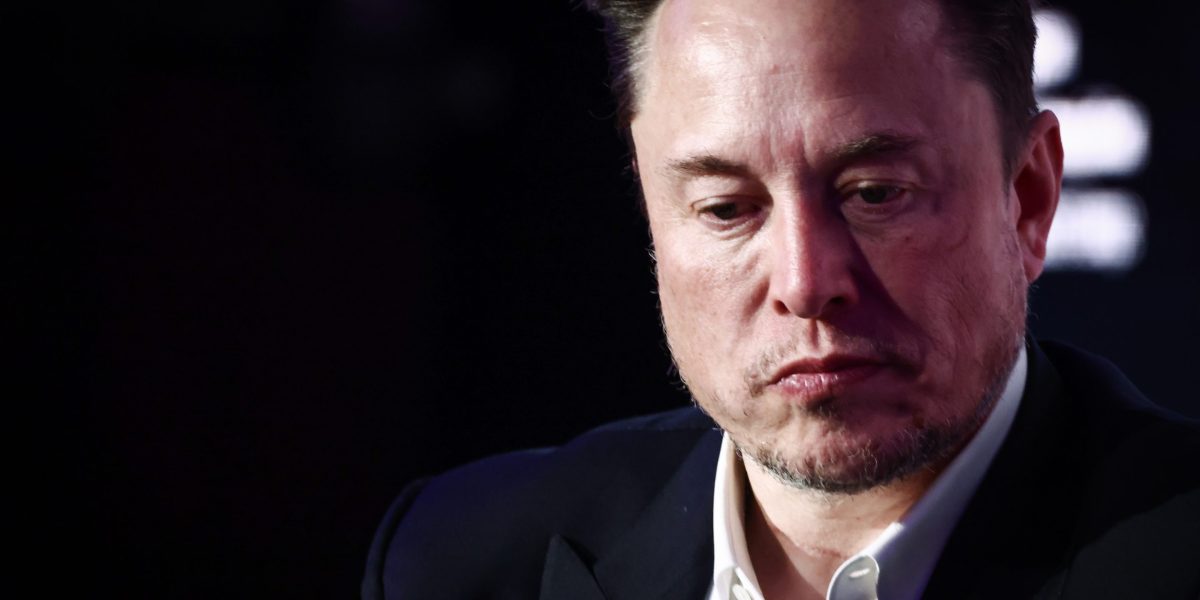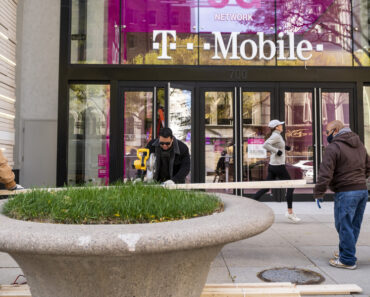This post was originally published on this site
https://fortune.com/img-assets/wp-content/uploads/2024/04/GettyImages-1963523622-e1712415029949.jpg?w=2048
Shockingly low quarterly sales figures from Tesla Inc. this week are raising a fundamental question for investors: If the days of breakneck growth are over, what are the shares of Elon Musk’s company really worth?
The concerns are valid. The number of cars Tesla sold in the first quarter missed Wall Street’s expectations by such a wide margin that it’s worth wondering how much of the electric vehicle giant’s demand problem is baked into the lofty expectations for its revenue and earnings growth over the next few years.
“There is not a lot of visibility on where Tesla’s next leg of growth will be — whether EVs or its other projects,” said Nicholas Colas, co-founder of DataTrek Research. “If you are going to command a premium multiple you will have to have great earnings visibility or a fantastic story on why those earnings will show up in the future. Tesla has neither at the moment.”
The growth issue around Tesla has become so sensitive, that a report on Friday saying the company was getting rid of its low-cost EV plans — which were considered key to fixing its demand problem — sent the stock tumbling more than 6%. Musk rushed to refute the story in a post on his social media site, X, which erased roughly half the decline but still left it as the heaviest weight on the S&P 500 for the session. Then after the market closed, Musk posted on X that the company will unveil its “robotaxi” on Aug. 8, causing a rally in after-hours trading.
“Tesla needs a $25,000 compact vehicle as a flanker product to compete with the many $25,000 EVs being launched,” said Gary Black, co-founder of Future Fund Advisors. “Doubling down on a robotaxi vehicle at this point would be incredibly risky.”
All of which helps explain why Tesla’s stock has struggled so much this year. Its 34% plunge makes it by far the biggest drag on the Nasdaq 100 Index since the start of January, and the worst performer on the S&P 500 Index. About 76% of the company’s current valuation is still predicated on its future earnings potential, according to a DataTrek analysis. Over the past year, shares have fallen 11%.
Sales Shock
“We caution Tesla shares could fall much further still should the company not be successful in quickly restoring unit volume and revenue growth,” JPMorgan analyst Ryan Brinkman wrote in a note to clients on Wednesday, pointing out the risk to Tesla’s stock market capitalization if it’s no longer perceived as a hyper-growth company.
Tesla sold about 387,000 cars in the first quarter, while analysts on average thought that number would be around 449,000. Obviously, profit estimates for the quarter will now have to be cut, after already dropping by more than half in a year. It also puts the company on track for a second straight year of declining annual earnings. In fact, analysts on average now expect that it will take until 2026 for Tesla to exceed the level of profitability it posted in 2022.
That, however, does not mean the shares are cheap. At 59 times forward earnings, Tesla’s the most expensive member of the Magnificent 7 group of big tech companies. High-flier Nvidia Corp. trades at a multiple of around 36, and Amazon.com Inc. is at 45. Yet, Tesla has the lowest growth estimates of the three for this year. And its stock is the biggest decliner in the Bloomberg Magnificent 7 Price Return Index in 2024.
Brinkman believes there’s a decent chance that Tesla’s revenue drops materially in the first quarter, “likely causing even the most bullish investors to take a sentiment check.” Analysts on average expect a slight decline of around 0.6%, according to data compiled by Bloomberg.
Despite Wall Street’s seeming surprise over Tesla’s troubles, no one should complain they weren’t warned. Tesla first noted the weakening pace of demand in October last year. But the reaction shows how few people fully grasped the speed of the deceleration.
“Analysts knew that EV growth was waning, but the extent at which it would impact sales was misunderstood on Wall Street last quarter,” Adam Sarhan, founder and CEO of 50 Park Investments, said in an interview.
Potential Rebound
With all of this being said, Tesla shares could rebound in the short term as dip buyers start sniffing around. They closed at $164.90 on Friday after trading as low as $160.51 when the news of the low-cost vehicles first hit. Chart technicians, who analyze stock moves to spot such reversals in trends, say the shares appear to be finding a near-term bottom. In other words, the most intense part of the selloff may be done — at least for now.
“As long as the stock stays above $150-$160 area, technically, it is trying to trace out a bottom,” 50 Park’s Sarhan said.
Read more: Tesla Shares Tumble Toward Make-or-Break Level in Latest Wipeout
But the company will have to show more for the stock price to have a sustained recovery. Investors need to be convinced that Tesla can return to its strong growth, fat margins and highly innovative ways. Right now the story is shrinking demand and a shaky outlook, which cuts to the heart of the company’s towering stock market valuation.
“It is challenging to call a bottom at this stage because there is not a true catalyst on the horizon,” said David Mazza, chief strategy officer at Roundhill Investments. Stemming the bleed in the shares will require Tesla to pull a “proverbial rabbit out the hat,” he said.
“It looks like Musk is trying to do just that with his latest X post on the robotaxi,” Mazza said. “But unless the company shares specific news on shoring up the core EV franchise, the impact may be illusionary.”






